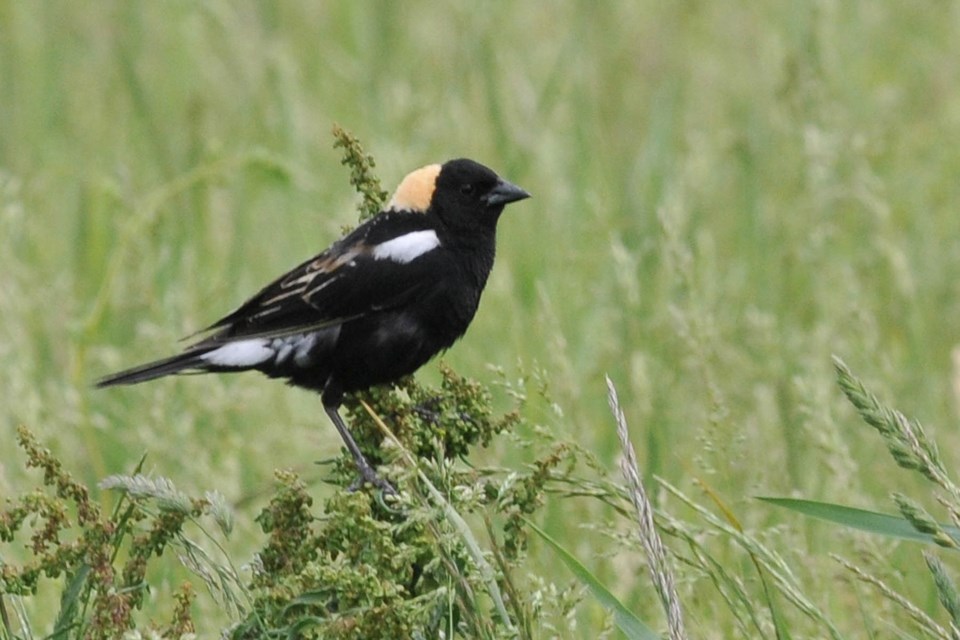In mid-June there is a scent that wafts through the air in the countryside, a pleasant scent, a smell of summer’s start ... the smell of fresh cut hay.
For me, in my youth, the first cut of hay was a tell-tale sign that school was about to wrap up and summer holidays were looming large, provided exams could be written and then quickly put behind. An exciting time awaited me to be a junior hand on my uncle’s farm in Severn Township.
By the time that last exam was written within the school’s stuffy auditorium/gym, Uncle Jack had already cut the first field of hay and was lining up the second. My job was to drive a tractor and rake the cut hay into windrows in preparation for baling.
As I shepherded that old Massey-Ferguson around and around and around and around the field in ever decreasing laps, there was plenty of time to watch the wildlife: meadowlarks, bobolinks, crows, gulls, barn swallows, and occasionally a deer or two were noted. Life was good.
But then I grew up and became aware of things like endangered wildlife, predator-prey relationships and how human activities were almost always obtrusive to wildlife ecology.
Nowadays when I see and smell that farm-fresh first cut of hay, I cringe. When I see crows and gulls following the hay mower I get sad. Why? Because I became aware of the plight of grassland nesting birds, such as the bobolink and Eastern meadowlark.
So here’s the situation: within the last few decades, birds that use grassy areas for nesting have been found to be in decline, their populations plummeting. Some species have become so rare they are now have a place on the infamous Species At Risk (SAR) list: bobolinks are “threatened” and meadowlarks are “special concern.” Which means it’s not too late to perhaps turn things around for them.
Here’s the challenge: bobolinks are a native species and have lived in southern Ontario since the formation of tall grass prairies in the wake to the receding Wisconsin glacier. However, since agricultural colonization of the area began, about 99% of these natural grasslands have been altered into residential areas or modern agricultural operations.
Without the protective tall grasses, the ground-nesting bobolink had to adapt to whatever habitat was left or available. Hay fields fit the bill, especially those with a ground cover of clover. Bobolink populations held their own quite well from the 1700s up to the about 1970 by using hay fields as their home base.
Then things started going amiss. As the southward migrating flocks of bobolinks numbered in the hundreds of thousands, fall crops in the southern States and some Caribbean lands were decimated by the hungry birds. So massive kill programs, including poisons, were brought in to get rid of bobolinks.
When the surviving bobolinks returned to Ontario the following spring, their once abundant hay fields were now being turned into sprawling housing subdivisions and industrial parks. And hay crops were dwindling as many farmers switched to cash crops such as soybean and corn.
But a few of the more traditional hay fields remained, as the stored product is used to feed cattle throughout the long winter months. The hay must be harvested when at its peak for nutritional content, which is when it is lush and green in mid-June.
The other thing that is happening in mid-June (besides exam week) is that the bobolinks are laying eggs and brooding. And then along comes the hay mower and the nest is laid bare or even crushed under the tractor’s tires. That flock of gulls is not eating locusts, they are feeding on the exposed eggs and young of bobolinks.
And so we have before us an interesting case of necessary agriculture practices interfering with the life cycle of a species at risk. When a critter is placed on the SAR list, it automatically has a level of legal protection in regards to preventing harm to the animal and/or its habitat.
Farmers were understandably reluctant to stop their livelihood because some fool dickey-bird is nesting on their land, and ardent environmental folks were aghast that hay cutting in June could be allowed to continue!
The result was some really good dialogue between the above parties, with a few do-able options agreed upon to keep the peace:
- 1: If there are no bobolinks nesting in your hay field, then carry on.
- 2: If bobolinks are noted to be in the field during nesting season, then a few subsets of options kick in:
- 2a. Cut other unoccupied fields first and leave the occupied field untouched as long as possible;
- 2b. Cut just a few perimeter swaths and leave the centre of the field for a few weeks, as bobolinks tend to nest in a loose colony in the center of the hay field;
- 2c. Delay cutting the hay until mid-July. While this option will produce less nutritious hay for cattle, it will produce hay of perfect quality for feeding to horses (who wants a fat horse?)
Many hay farmers have taken to these options, as most of them are wildlife lovers at heart ... provided the financial bottom line of the farm is not too compromised!
And so today as I drive by that fresh cut hay field, I try to place my hope in the awareness of the bobolink’s plight, and reminisce of those days of youth when the exam schedule had BOTH math and science on the same day!



